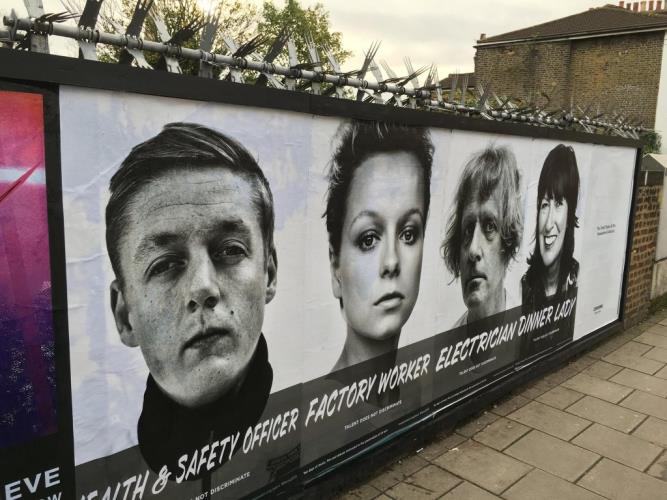Yi-Hsin Lin graduated from SOAS; now living in England as a writer. Lin has participated in the curation of Chinese painting in Victoria and Albert Museum and British Museum. He is also a lecturer in Chinese art at Christie’s Education and contributes to several Chinese-language art magazines.

According to Enriching Britain: Culture, Creativity and Growth, a report published in 2015, the cultural and creative industries accounted for 5% of the economy in Britain, equivalent to £77 billion in value. However, because of the budget cuts by the upper house of the parliament, expenditure on social welfare and tertiary education have been reduced. Regional arts and culture departments have also encountered continuous cuts, which worried the cultural sector. To respond to the impact of economic downturn, CREATE, an NGO based in East London, launched a project called Panic!, in partnership with the Barbican, The Guardian, Goldsmiths, University of London and British Art Show 8. The project consisted of a survey of the creative and cultural sector in Britain, as well as a ten-day programme that discussed and presented what’s going on in the sector and what’s next.
The survey
The survey was done in September and October 2015, and 2,539 people in Britain were interviewed. They include people working in museums, galleries, libraries, performance and music as well as visual arts sectors. The following findings are worth our attention and reflection. First, those that earn over £50,000 per annum are most likely to believe that they got there through hard work, talent and ambition. Those earning under £50,000 per annum are most likely to believe that it’s not about what you know but who you know. Secondly, the majority of white people in the arts don’t acknowledge the barriers facing BAME people trying to find a foothold in the sector. Also, women are more likely than men to have worked in the arts sector and are generally paid less than their male counterparts. The survey also found that 76% of respondents working in the arts had at least one parent working in a middle class job, and 88% of respondents had worked for free at some point in their career. The research shows that if young people don’t have parents that are able to support them in their pursuit of a creative career then it is extremely hard to break into the industry.
Debates about art, music and performance
Apart from publishing the findings, the organisers also initiated a series of live debates and a programme of exhibition, live music and film to raise awareness among the authorities and the public. Debate topics include: does popular culture offer opportunities for young artists today? Does the domination by middle class people in the arts and culture sector lead to a lack of diversity in the industry? What is the most effective way to run organisations in a multicultural global economy? Do diverse workforces make institutions and businesses more dynamic and successful? Is the reputation of London as a creative leader over? Can young artists who flocked to London get the knowledge they need and the innovation they want so as to contribute to the society? The survey reveals the extent to which social class, ethnicity, age and gender continue to influence careers in the arts in Britain and identifies hidden problems. The organisers expect that by publishing the findings, more people will think again what’s going on in the arts and how the sector should be improved. Particularly, it’s hoped that it will help create a fairer and more diversified environment for young people who want to enter the creative sector.